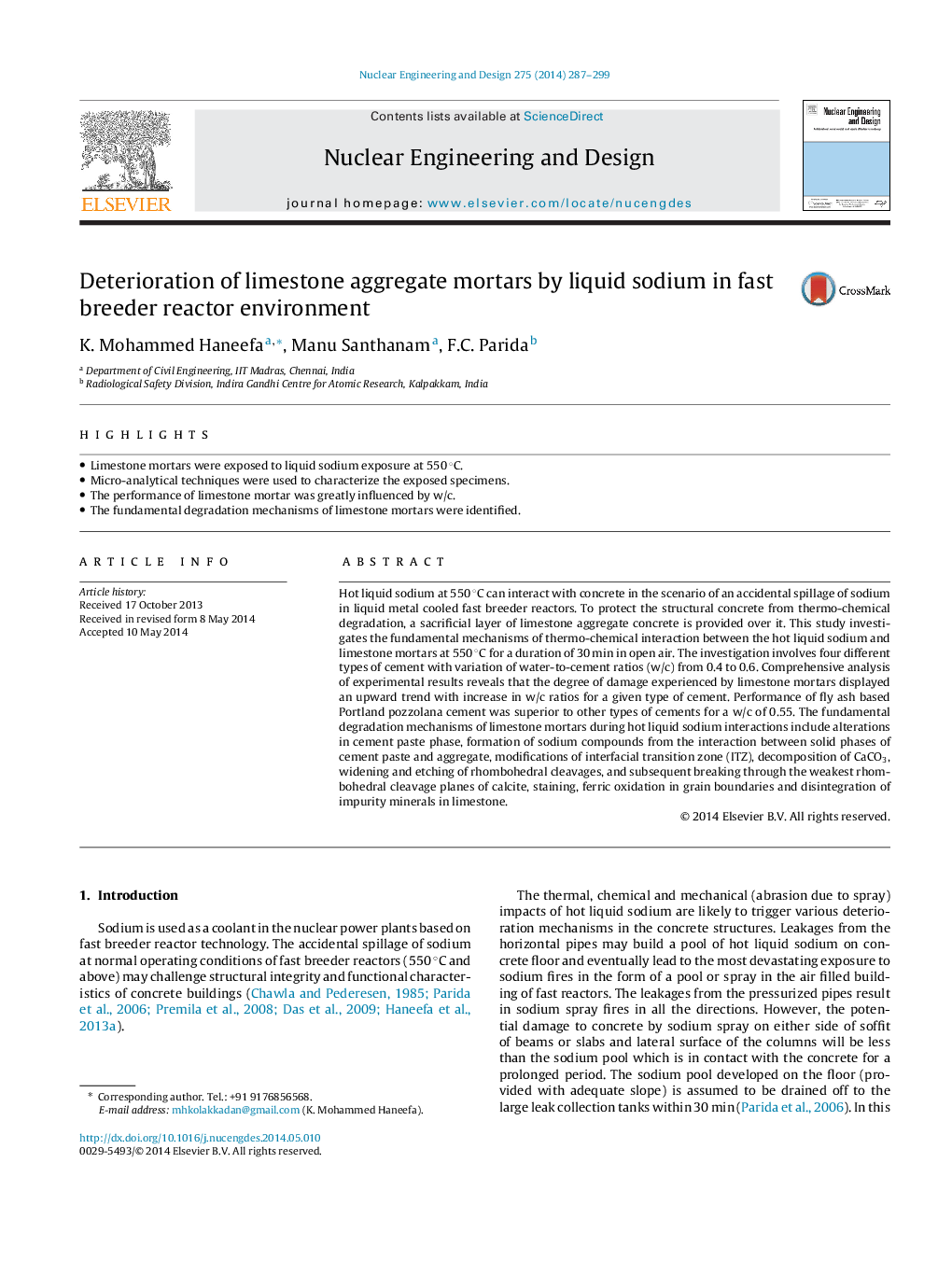| Article ID | Journal | Published Year | Pages | File Type |
|---|---|---|---|---|
| 6762352 | Nuclear Engineering and Design | 2014 | 13 Pages |
Abstract
Hot liquid sodium at 550 °C can interact with concrete in the scenario of an accidental spillage of sodium in liquid metal cooled fast breeder reactors. To protect the structural concrete from thermo-chemical degradation, a sacrificial layer of limestone aggregate concrete is provided over it. This study investigates the fundamental mechanisms of thermo-chemical interaction between the hot liquid sodium and limestone mortars at 550 °C for a duration of 30 min in open air. The investigation involves four different types of cement with variation of water-to-cement ratios (w/c) from 0.4 to 0.6. Comprehensive analysis of experimental results reveals that the degree of damage experienced by limestone mortars displayed an upward trend with increase in w/c ratios for a given type of cement. Performance of fly ash based Portland pozzolana cement was superior to other types of cements for a w/c of 0.55. The fundamental degradation mechanisms of limestone mortars during hot liquid sodium interactions include alterations in cement paste phase, formation of sodium compounds from the interaction between solid phases of cement paste and aggregate, modifications of interfacial transition zone (ITZ), decomposition of CaCO3, widening and etching of rhombohedral cleavages, and subsequent breaking through the weakest rhombohedral cleavage planes of calcite, staining, ferric oxidation in grain boundaries and disintegration of impurity minerals in limestone.
Related Topics
Physical Sciences and Engineering
Energy
Energy Engineering and Power Technology
Authors
K. Mohammed Haneefa, Manu Santhanam, F.C. Parida,
